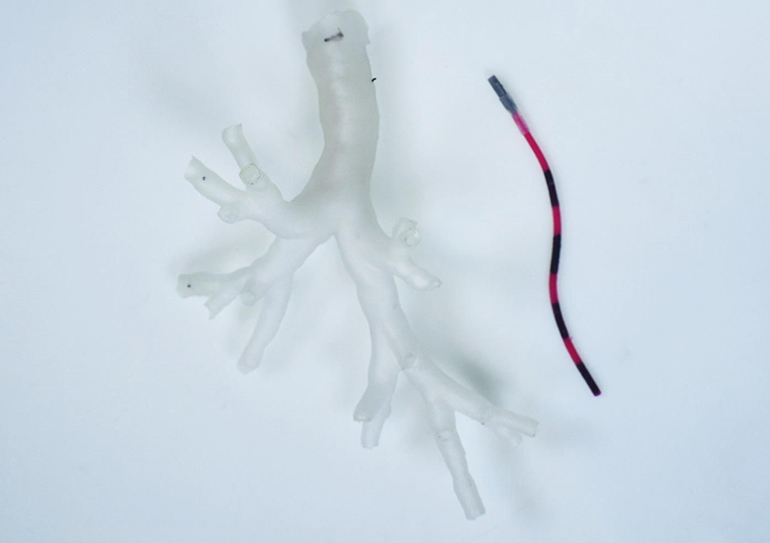Researchers at the University of Leeds in the UK have created a magnetic “tentacle robot” that is just 2 mm in diameter, which they hope will be able to navigate through some of the smallest airways in our lungs. At present, a bronchoscope is used to investigate the lungs, but this cannot pass into very narrow airways without an additional catheter attachment. This arrangement is cumbersome and difficult to navigate. This new technology is controlled autonomously using external magnets mounted on robotic arms and does not require X-ray imaging during the procedure. The researchers hope that the device will aid clinicians in diagnosing and treating various lung diseases.
Bronchoscopy allows clinicians to peer inside our lungs, and has greatly aided them in diagnosing, monitoring and treating a variety of conditions, from spotting lung cancer to removing foreign objects from the lungs (which is necessary more often than you might think!). While the existing technology is undoubtedly useful and has changed the way that we can view and interact with the lungs, there is always room for improvement, and this latest technology aims to achieve this.

The researchers call their creation a magnetic tentacle robot. It consists of interlinked cylindrical segments that are approximately 80 mm in length and just 2 mm in diameter (which is twice the diameter of a ballpoint pen tip). The segments consist of a rubbery elastomer that contains tiny magnetic particles, allowing the flexible creation to be manipulated using external magnets. The magnetic fields applied by the external magnets result in the flexible tentacle contorting and advancing through narrow airways.
“A magnetic tentacle robot or catheter that measures 2 millimeters and whose shape can be magnetically controlled to conform to the bronchial tree anatomy can reach most areas of the lung, and would be an important clinical tool in the investigation and treatment of possible lung cancer and other lung diseases,” said Pietro Valdastri, a researcher involved in the study. “Our system uses an autonomous magnetic guidance system which does away for the need for patients to be X-rayed while the procedure is carried out.”
The system aims to be completely autonomous, and a movement sequence for the external magnets is calculated before hand based on patient scan data. This has the advantage of not requiring medical staff to grapple with a bronchoscope, but it also removes the need for X-ray imaging during the procedure itself, avoiding radiation exposure and inconvenience for patients and clinicians alike.
So far, the researchers have tested the system as a proof-of-concept, using a model of the bronchial tree, but the next steps will involve testing it in cadavers before first-in-human trials.
See an animation of the magnetic control:
Study in Soft Robotics: Patient-Specific Magnetic Catheters for Atraumatic Autonomous Endoscopy
Flashbacks: Intuitive Surgical Releases Ion Robotic Lung Biopsy System;
Via: University of Leeds
